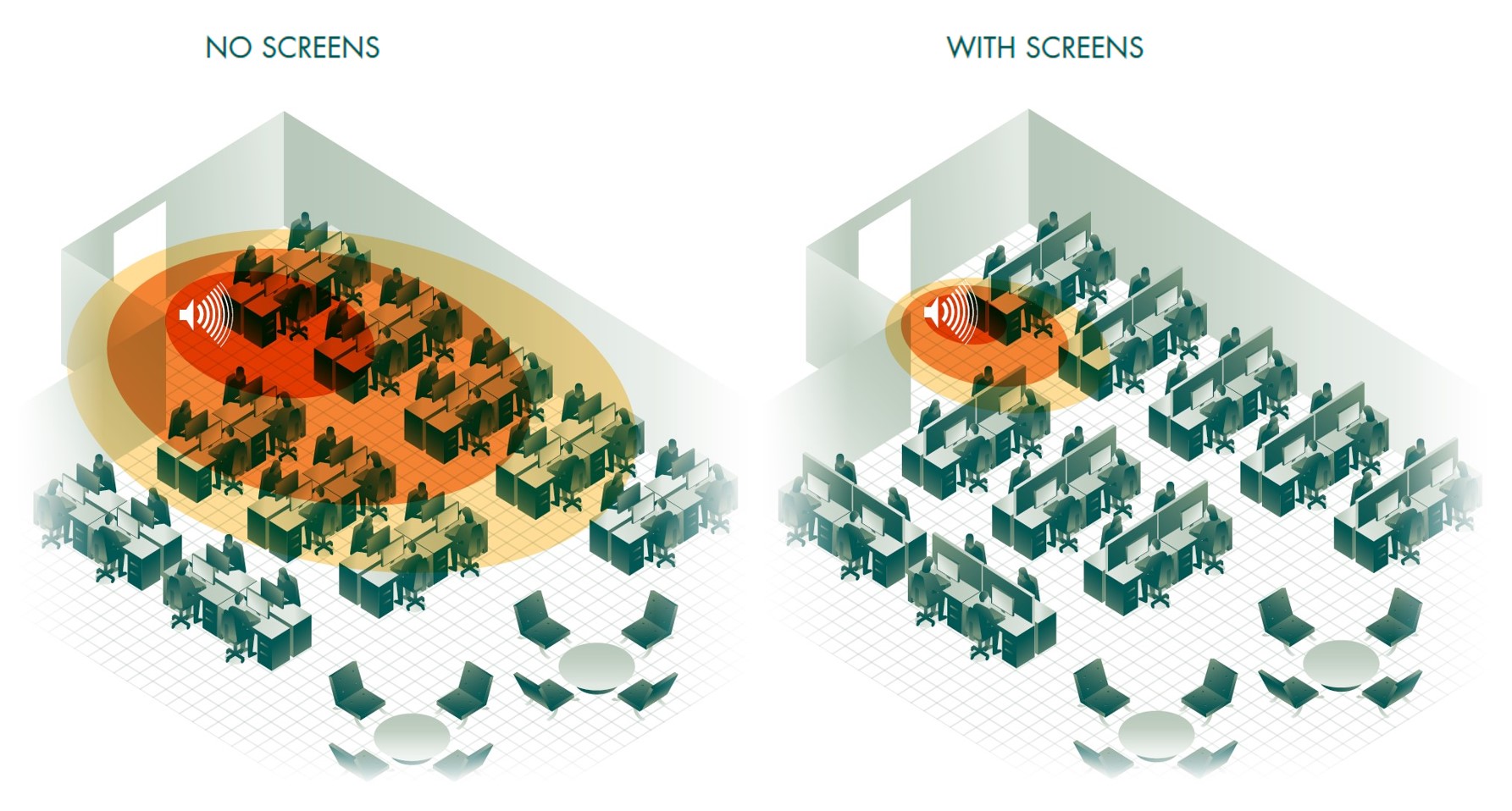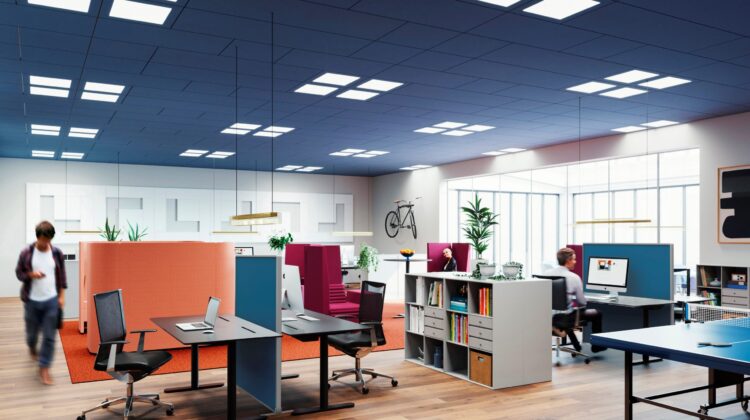
When it comes to designing offices with top-of-the-line acoustics, screens are an invaluable tool. If you are new to the basic principles of acoustic design with screens, this post is for you. Below you will learn how to improve acoustic privacy in open offices with screens.
Why use acoustic screens? – The paradox of open offices
70% of office workers worldwide are dissatisfied with the acoustic conditions in their workplace. The most cited reasons for designing open offices are to facilitate collaboration, idea generation and community building. In other words: verbal communication. At the same time one of the biggest issues of open-plan offices is distractions due to speech. In other words, once again: verbal communication. Paradoxically, the very reason for open offices also seems to be their biggest problem.
This might appear to be an irreconcilable paradox for this type of workspace, but it in reality it is all about finesse in acoustic design. The trick is to reduce sound propagation through the space. Read more about the effect of irrelevant speech on productivity and health here:
Acoustic privacy & sound propagation
Really, what we need to consider is the acoustic privacy of the office. In good acoustic conditions workers are able to conduct a conversation at close range without disturbing their colleagues in the surrounding office.
Acoustic privacy is achieved by decreasing sound propagation through the installation of acoustic materials. Used in conjunction with a class A sound-absorbing ceiling and wall panels, high-quality acoustic screens can lower sound propagation significantly and improve the speech privacy of the office.
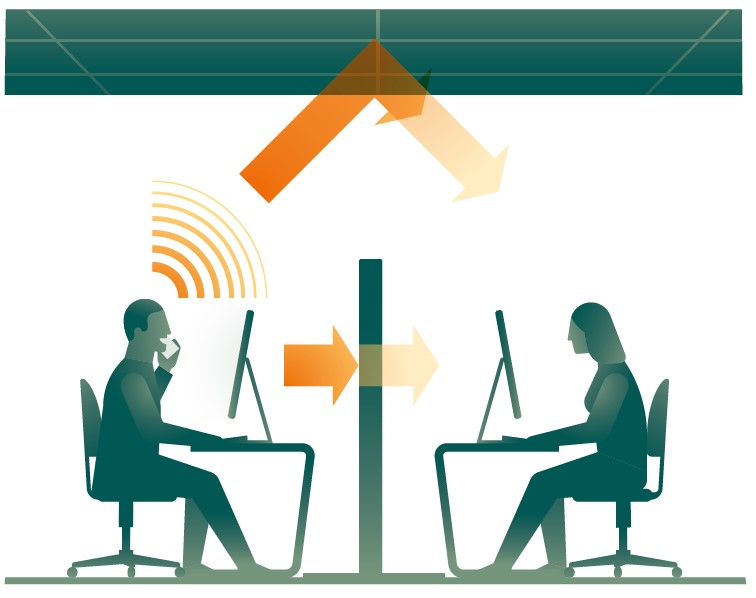
Inside acoustic screens – Blocking and absorbing sound with acoustic screens
High-quality acoustic screens combines two important acoustic qualities to reduce sound propagation as much as possible. Firstly, it is assembled around a hard core that impedes sound travelling through the screen.Secondly, durable absorbers are placed on both sides of Akusto Screen. Instead of being reflected back into the space, sound waves that hit the screens are absorbed, which lessens sound propagation even further.
Height of acoustic screens should be sufficient to block direct paths of speech from workstation to workstation. It should also be noted that acoustic screens extending both above and below desk surfaces provide a higher degree of speech privacy.
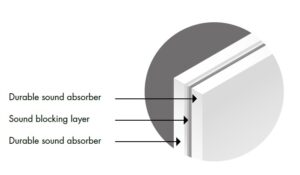
Because of their highly sound-absorbing surface, acoustic screens also reduces reverberation time and noise levels, thus contributing to bettering acoustic comfort in general.
Changes in sound propagation:
Acoustic design with screens – How to improve acoustic privacy with screens
Ideally, acoustic screens should be placed close to workstations. This allows them to both shield the individual worker from incoming noise and absorb sound generated from the workstation. For the best effect one acoustic screen should be installed for every two workstations.
Acoustic screens can also be placed close to other noise sources, such as machines, to lessen their distracting effect through the office environment. The closer to the noise source the acoustic screen is placed the better.
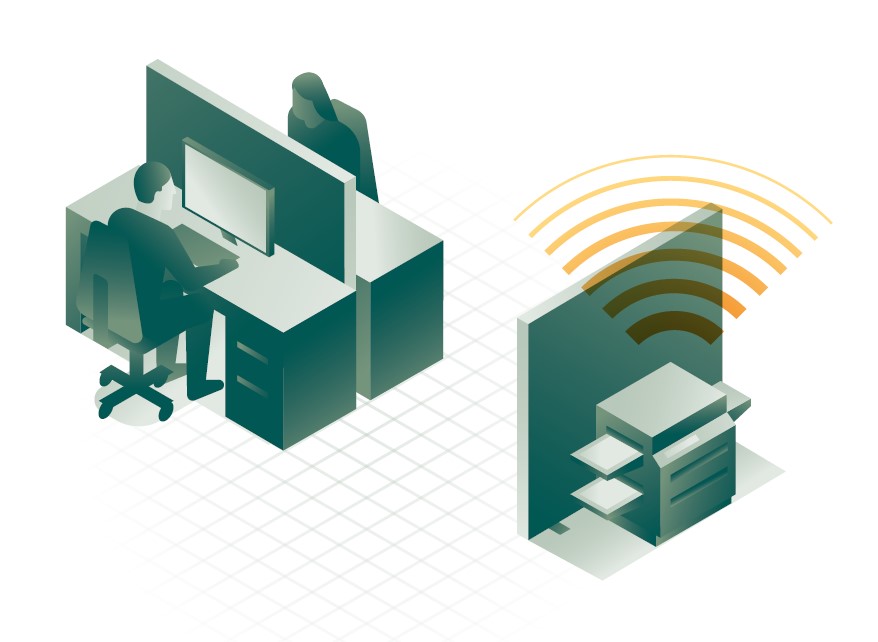
Reducing sound propagation – Improving acoustic privacy
When it comes to technical acoustic evaluation the most important acoustic descriptor to consider in relation to screens in open offices is D2,S which is a measure of the attenuation of A-weighted sound pressure of speech in decibels. It specifies the reduction in sound pressure when the distance to the source is doubled. Therefore the higher D2,S value in an office space, the better.
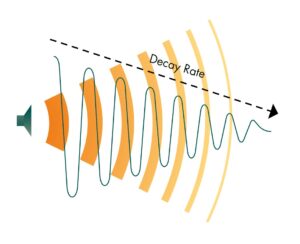
The effect of acoustic screens – An example of improving acoustic privacy
Even a small change in D2,S can affect the sound environment in an office. Let’s consider an example: a standard open office space of about 187 m2, with 24 workstations and a class B acoustic ceiling suspended at 2.6 meters. If we then imagine a noise level of 46 dB, we can presume that speech will be much less disturbing below this level. Therefore, 46 dB is in this case our target value for dampening of speech to improve acoustic privacy.
Installing acoustic screens for every two workstations could realistically raise the D2,S from about 5 to 7 dB in this example.
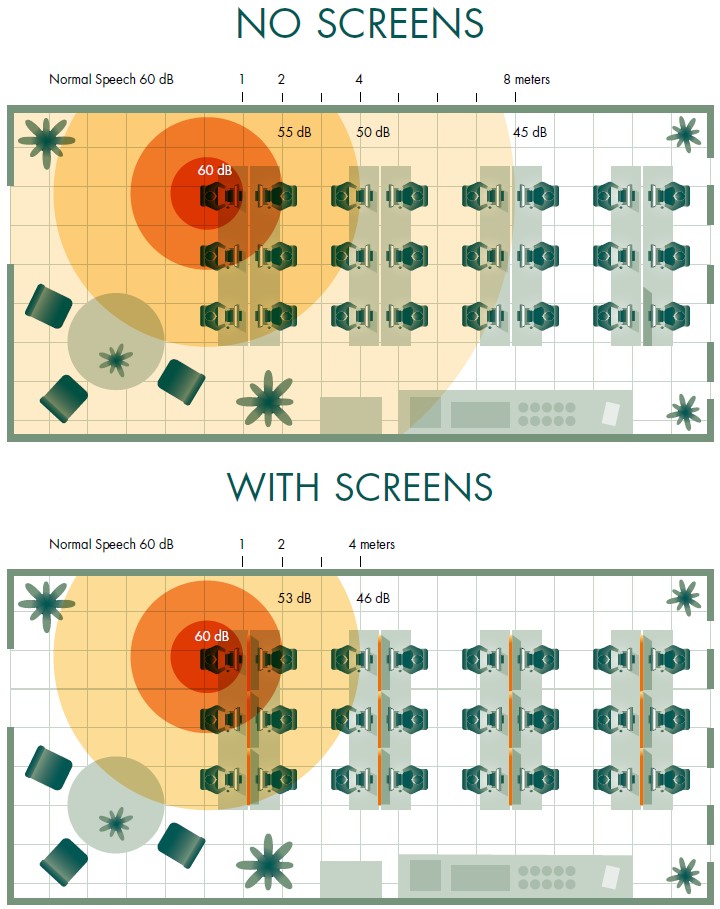
A 2 dB difference in D2,S might not seem like a lot, but when you consider how this difference adds up per doubling of distance, that is actually a noteworthy change. As illustrated above, this would mean that about 7 additional office users would be far less distracted by speech from the corner workstations.
Studies show that the effect of acoustic screens is greatly improved when combined with sound-absorbing ceilings. In fact, a class A sound-absorbing ceiling should be the first order of business when considering acoustic conditions in any office. With a class A sound-absorbing ceiling and wall absorbers installed, acoustic screens can almost double the dampening of speech measured in D2,S – even under otherwise suboptimal acoustic conditions.
A special thank you to Helene Sallenhag for her support and previous work with screens that oriented this post.
We hope you enjoyed this easy introduction to acoustic design with screens. If you want to go deeper into this subject, maybe this post on the technical details of acoustic screens would be of interest to you:
Acoustic privacy and screens – What are the technical details?
If you would like an in-depth look at the exact effects of screens and other types of acoustic treatment or a more complete introduction to acoustic design with screens, please see these posts:
Study interview: The effect of absorbers and screens on the decay of speech in offices
Author: Morten Roar Berg, Global Concept Developer for office environments

